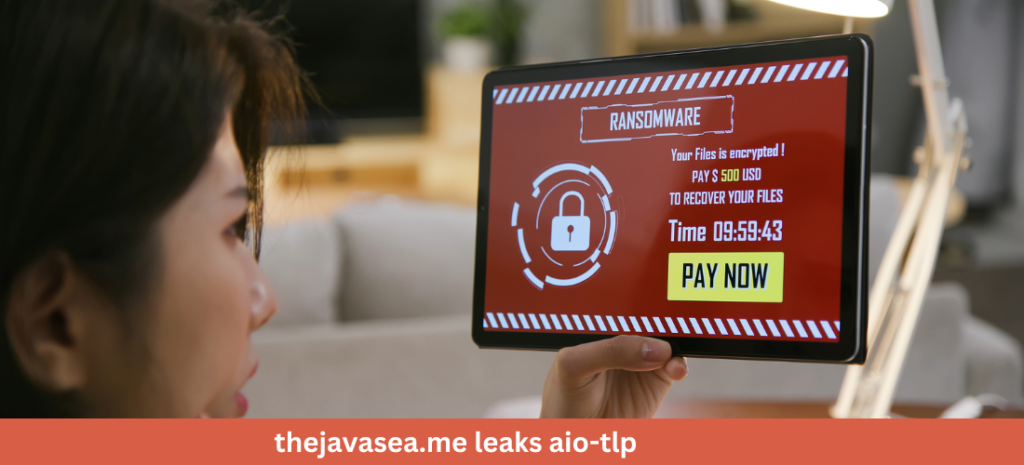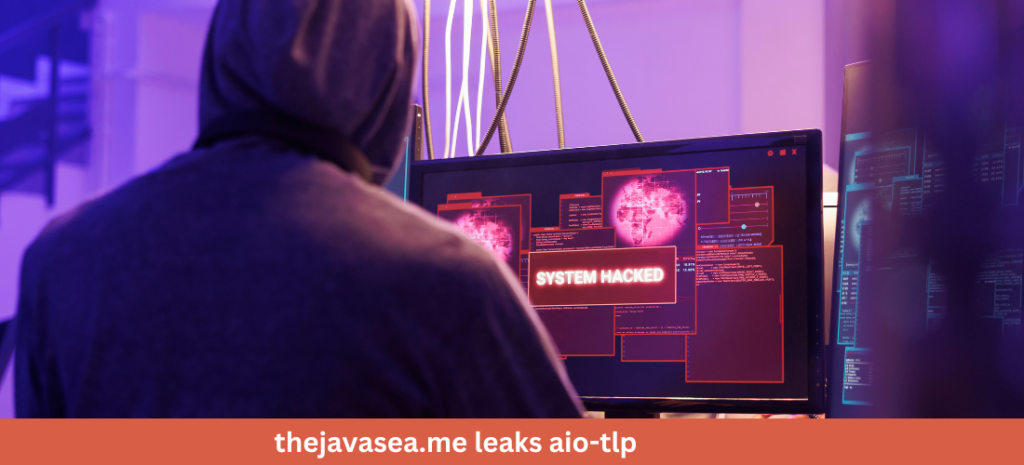In recent years, cybersecurity breaches and data leaks have become a growing concern for businesses and individuals alike. Among the various incidents, the leaks from thejavasea.me have captured widespread attention, especially for their involvement with AIO-TLP (All In One-Traffic Leaking Protocol). This article delves into the nuances of these leaks, explaining the risks involved and the steps necessary to protect sensitive data.
What is thejavasea.me?
thejavasea.me is a platform notorious for hosting a variety of unauthorized data leaks. Often, it serves as a go-to resource for hackers, data miners, and those looking to exploit personal and corporate information. The site is believed to host leaked credentials, sensitive information, and trade secrets from various companies and individuals.
Key Concerns with thejavasea.me Leaks
The primary concern surrounding thejavasea.me leaks is the breach of privacy and security for both individuals and corporations. Once sensitive information is made available on this platform, it becomes vulnerable to misuse by malicious entities. These include:
- Identity theft: Personal information such as names, addresses, social security numbers, and financial details can be exploited for identity theft.
- Corporate espionage: Leaked corporate information, such as trade secrets, business strategies, and proprietary data, can severely damage an organization’s competitive advantage.
- Ransomware attacks: Cybercriminals may use leaked data as leverage to demand ransoms from victims, promising not to release or further exploit the information.
What is AIO-TLP?

The term AIO-TLP stands for All In One-Traffic Leaking Protocol, a sophisticated method used by cybercriminals to leak sensitive information across multiple platforms. This protocol amplifies the severity of data leaks by distributing the compromised data to various sources, making containment extremely difficult. AIO-TLP often relies on a mixture of automated scripts, botnets, and manual interventions to ensure that the leaked data is widely spread and accessible to those seeking to exploit it.
Why is AIO-TLP so Dangerous?
Unlike traditional data breaches where the damage can be confined to a specific platform, AIO-TLP magnifies the risks by disseminating information across numerous forums and networks. This creates a chain reaction that increases the probability of misuse, including:
- Widespread availability: The data becomes accessible to a larger pool of cybercriminals, increasing the likelihood of secondary attacks.
- Difficult containment: Once the data has been leaked through AIO-TLP, stopping its spread becomes nearly impossible.
- Long-term exposure: Even after the initial breach, the compromised information can continue to circulate online for years, creating long-term risks for the victims.
Read Also: Desiremovies Space
The Consequences of Leaks on thejavasea.me and AIO-TLP
For Individuals
For individuals whose personal information is leaked, the consequences can be devastating. These may include:
- Identity Theft: Cybercriminals can use personal data to open bank accounts, apply for loans, or commit fraud.
- Financial Loss: Victims may find unauthorized transactions or face charges they never incurred.
- Emotional Stress: Dealing with the aftermath of a data breach can lead to anxiety, stress, and a sense of insecurity.
For Corporations
For businesses, the fallout from these leaks can be even more severe, often impacting operations, reputation, and profitability. Some potential consequences include:
- Loss of Intellectual Property: When sensitive corporate data such as trade secrets or business plans are leaked, competitors may use this information to gain an edge.
- Reputational Damage: A company’s reputation can take a severe hit, affecting customer trust and shareholder confidence.
- Legal Liabilities: Corporations may face lawsuits from customers or partners for failing to protect their data.
How to Protect Yourself from thejavasea.me Leaks and AIO-TLP
While preventing a leak from happening in the first place is always preferable, there are steps that individuals and companies can take to mitigate the effects of a breach.
1. Strong Cybersecurity Practices
Implementing robust cybersecurity protocols can go a long way in preventing data leaks. These may include:
- Using Multi-factor Authentication (MFA): MFA adds an additional layer of security, making it harder for unauthorized users to gain access to sensitive accounts.
- Regular Software Updates: Keeping software up to date ensures that the latest security patches are in place, reducing vulnerabilities.
- Encryption: Encrypting sensitive data adds an additional layer of security, ensuring that even if data is compromised, it remains unreadable without the decryption key.
2. Monitoring and Response
Once a leak has occurred, it’s crucial to respond swiftly. Businesses should set up monitoring systems to detect any breaches as soon as they happen. Tools like Data Loss Prevention (DLP) software can be used to track the flow of information, ensuring that sensitive data stays protected. Additionally, immediate action plans should be in place to contain the damage, including notifying affected parties and involving legal authorities if necessary.
3. Legal Measures
For both individuals and businesses, there may be legal recourse available. For example, companies can file lawsuits against parties involved in the unauthorized distribution of their data. In some cases, affected individuals may also be able to seek damages through class-action lawsuits or other legal avenues.
The Role of Dark Web Monitoring
In many cases, the data leaked through thejavasea.me and AIO-TLP ends up on the dark web, where cybercriminals trade sensitive information. Engaging in dark web monitoring can help individuals and corporations identify when their data has been compromised. By identifying compromised data early, victims can take action to mitigate the risks, such as changing passwords, securing accounts, and freezing credit.
Staying Ahead of the Threat
To stay ahead of threats posed by platforms like thejavasea.me and protocols such as AIO-TLP, it’s important to remain vigilant and proactive. This includes:
- Educating employees and individuals about the risks of data leaks and how to spot phishing attempts.
- Investing in cybersecurity solutions that can detect and prevent breaches.
- Regularly reviewing security policies to ensure they meet current standards and threats.
The Future of AIO-TLP Security: Trends, Challenges, and Solutions

In the evolving landscape of cybersecurity, AIO-TLP (All In One-Traffic Leaking Protocol) presents both new opportunities and complex challenges. As cyber threats grow more sophisticated, AIO-TLP has emerged as a critical concern for organizations and security professionals. This article explores the future of AIO-TLP security, detailing the emerging trends, anticipated challenges, and the solutions needed to mitigate these risks.
Understanding AIO-TLP: A Brief Overview
AIO-TLP is a method employed by cybercriminals to leak sensitive information across multiple platforms. It is distinguished by its ability to disperse large volumes of data quickly and effectively, often leading to widespread exposure of private or corporate information. As organizations become increasingly digitalized, the risk posed by AIO-TLP continues to grow, making it essential to explore how security protocols will evolve to combat this threat.
Emerging Trends in AIO-TLP Security
1. AI and Machine Learning in Threat Detection
Artificial Intelligence (AI) and Machine Learning (ML) are set to play a critical role in detecting and mitigating AIO-TLP-related attacks. As the volume of data flowing across the internet increases, traditional security methods struggle to keep up. AI-powered systems can analyze traffic patterns and detect anomalies that may indicate the presence of a leak.
- Predictive Analytics: AI can be used to predict potential vulnerabilities in a system before they are exploited by attackers. This proactive approach allows organizations to address weaknesses and reduce the chances of a breach.
- Automated Response Systems: Future security solutions will likely feature automated response mechanisms that can detect and neutralize a potential AIO-TLP attack in real-time.
2. Blockchain for Data Integrity
Blockchain technology is another promising solution for securing sensitive information and preventing unauthorized leaks. Due to its immutable and decentralized nature, blockchain can provide a tamper-proof record of transactions and data exchanges. This can help ensure that even if information is leaked, its authenticity and ownership remain clear.
- Smart Contracts: Blockchain’s smart contracts could be used to automate security protocols, ensuring that only authorized users can access specific data at designated times.
- Distributed Ledger Technology (DLT): This ensures that any tampering with data is instantly detected, providing a transparent and secure mechanism for data storage.
3. Zero-Trust Architecture
The shift towards a Zero-Trust architecture is a direct response to the growing threat of AIO-TLP. In a zero-trust model, every user and device is verified before accessing sensitive data, minimizing the potential for unauthorized access.
- Granular Access Controls: By implementing strict access controls and continuously monitoring users, organizations can prevent the spread of sensitive information.
- Identity Verification: Multi-factor authentication (MFA) and continuous identity verification ensure that only verified users gain access to the network.
4. Increased Focus on Data Encryption
As the risks associated with AIO-TLP grow, encryption will play an increasingly important role in protecting data. Even if data is leaked, encryption ensures that it remains unreadable without the appropriate decryption key.
- End-to-End Encryption (E2EE): More organizations are likely to adopt E2EE to ensure that data remains protected at every stage of its journey across networks.
- Quantum-Resistant Encryption: As quantum computing becomes more advanced, there will be a need for encryption methods that can withstand the power of quantum algorithms.
Challenges in Addressing AIO-TLP Security

While the future of AIO-TLP security is promising, it is not without its challenges. Some of the primary hurdles that security professionals will need to overcome include:
1. The Sophistication of Cybercriminals
As security measures evolve, so do the techniques employed by cybercriminals. Attackers are developing more sophisticated methods to bypass security protocols, making it harder to detect and mitigate AIO-TLP attacks.
- Use of AI by Hackers: Cybercriminals are increasingly using AI to automate their attacks, making them more efficient and harder to detect.
- Polymorphic Malware: This type of malware changes its code with each infection, making it difficult for traditional antivirus software to recognize and block it.
2. The Expanding Attack Surface
With the growth of the Internet of Things (IoT) and the rise of remote work, the attack surface for AIO-TLP has expanded significantly. More devices connected to the internet means more potential entry points for attackers.
- Unsecured IoT Devices: Many IoT devices lack strong security measures, making them an easy target for cybercriminals looking to exploit vulnerabilities.
- Remote Work Risks: Employees working from home may not have the same level of protection as they would within a corporate network, increasing the risk of leaks.
3. Regulatory Challenges
The evolving regulatory landscape presents another challenge in AIO-TLP security. As governments introduce stricter data protection regulations, organizations will need to balance compliance with the need to secure their data.
- Cross-Border Data Transfers: As regulations around data transfer across borders become more stringent, organizations will need to ensure they remain compliant while protecting their data from leaks.
- GDPR and CCPA: Regulations like the General Data Protection Regulation (GDPR) and the California Consumer Privacy Act (CCPA) impose heavy fines on organizations that fail to protect sensitive data, increasing the need for robust security measures.
Conclusion
The leaks associated with thejavasea.me and the AIO-TLP protocol present serious risks to both individuals and businesses. By understanding the nature of these threats and taking proactive steps to secure sensitive information, it’s possible to reduce the likelihood of becoming a victim of such leaks. Cybersecurity should be treated as an ongoing priority, and swift action is crucial once a breach is detected.



